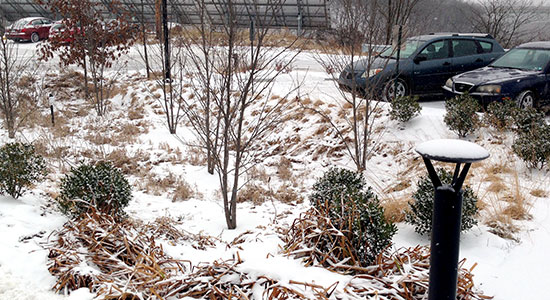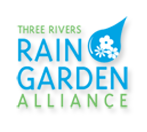Planting FAQs
We've answered a lot of your questions about planting your rain garden. Here are some more that you may have...
- Should I mulch my rain garden?
- How long will water stay in my rain garden?
- Could my rain garden cause flooding in my basement?
- Will my rain garden look too wild or messy?
- What happens to the plants during a dry spell?
- Will my rain garden still work in the winter?
- Can I pile snow on my rain garden?

Should I mulch my rain garden?
Avoid using large-sized mulch or bark chips. They are more likely to be washed away or moved around by the water.
How long will water stay in my rain garden?
It shouldn't hold water for longer than 24 hours.
Could my rain garden cause flooding in my basement?
Not if you keep it at least 10 feet away from your house so water doesn't drain along the foundation. And make sure the garden drains away from, not toward, any buildings on your property.
Will my rain garden look too wild or messy?
To keep your rain garden looking attractive, just keep the edges tidy. Tall plants and grasses tend to lean over, so you might consider short species.
What happens to the plants during a dry spell?
Native plants will thrive in most weather conditions. Those that require more water should be placed in the lowest part of the garden. Plants that thrive in drier soil should be planted on the banks of the garden.
Will my rain garden still work in the winter?
Even though the plants are dormant in winter, the rain garden will still absorb water. The ponding area stores some runoff even if the ground is frozen.
Can I pile snow on my rain garden?
It's okay to put a little snow on top, but too much might compact the soil or damage the plants. A better idea is to pile lots of snow right next to the garden. When it melts in spring, the water will flow right in.
